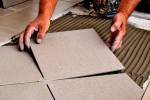Consider the lowly carpet
My previous Green Living column focused on the benefits of recycling and the transition to an enhanced single-stream system that dramatically increases participation and reduces waste. Perhaps this is a good time to look closer at what that really means.
When we recycle, we save energy, improve air and water quality and reduce our need for raw materials. We could rebuild our entire commercial air fleet with just three months' worth of the aluminum we currently send to landfills. Personally, I find that appalling. Recycling a single aluminum can saves enough energy to power a TV for three hours and the average person has the opportunity to recycle more than 25,000 cans in a lifetime. Why would we not?
The amount of paper we nonchalantly throw "away" each year is staggering (remember, there really is no away). Producing recycled paper reduces contributions to air pollution by 95 percent. Recycling a stack of newspapers just 3 feet high saves one whole tree. What about glass? It never wears out and can be recycled over and over again. Using recycled glass cuts water pollution by 50 percent. Recycling one glass jar saves enough energy to run an 11-watt compact fluorescent bulb for 20 hours.
In 2005, 3.3 billion pounds of post-consumer plastics were recycled in the U.S. Just five plastic soda bottles yield enough fiber for one extra-large T-shirt, 1 square foot of carpet or enough fiber insulation to fill a ski jacket. The plastic recycling industry alone provides jobs for more than 52,000 American workers.
Still not convinced? Consider just one product commonly found in almost every home in America: carpet. Many manufacturers now produce carpet from materials that used to end up in our landfills or oceans. With similar price and performance as carpeting made from virgin material, recycled carpet often has added benefits. Plastic beverage containers are made with top-quality PET (that stands for polyethylene terephthalate -- so we'll just stick with PET) resins as required by the U.S. Food and Drug Administration. Thus, recycled PET is superior to lower grades of virgin synthetic fibers.
Less toxic off-gassing of volatile organic compounds results in improved indoor air quality in the home. Even the manufacturing process produces fewer emissions than ordinary carpet. It also is inherently stain resistant, resulting in easier, less toxic maintenance. Bottom line: better air.
It is usually impossible to determine the specific cause of what ails us, but when it comes to asthma, allergies, sinus irritation or worse, it seems logical that the better the air we breathe, the healthier we'll be. I wonder how many children's lives would be enhanced if they lived and played on healthier floors.
About 45 2-liter bottles go into a square yard of carpet fiber. In our home we only have carpet in a couple of rooms but just that small amount of PET-manufactured product saved more than 2,000 bottles from going to waste, and it has helped us breathe easier, too.
To those who took the few extra seconds to recycle those bottles, I have one thing to say: "Thank you!" After seven years, the carpet still looks and feels fantastic.
It was not commonplace when we installed it, requiring a special order once we found a company that made it. Now, thanks to recycling, it is readily available and easy to find. If you're interested, I recommend doing some research online first as well as finding a dealer who has specific knowledge about green carpeting products.
So the question I pose is this: Can anyone really afford to throw away valuable materials when reusing them is so beneficial? Obviously, the answer is no and I can't imagine any logical person saying otherwise. In my experience, recycling has become a very natural, instinctive process that makes sense and feels good. Like most aspects of green living, I am grateful for every opportunity to help others and to heal our world.
Steve Rypka is a green living consultant and president of GreenDream Enterprises, a company committed to helping people live lighter on the planet. For more information and links to additional resources relating to this column, or to reach Steve, please visit www.greendream.biz.























